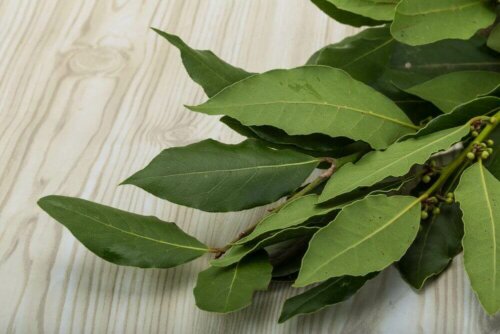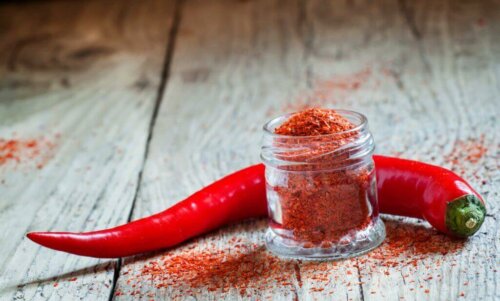Three Topical All-Natural Muscle Relaxants

You can use various all-natural ingredients to make topical muscle relaxants. Of course, there are pharmacological options available. However, the combination of certain oils and herbs is also quite effective. C
Muscle aches are the result of many things and can manifest in any animal regardless of our age. It often manifests after physical overexertion or injury but can also be a symptom of a more serious condition.
In any case, people are often seeking solutions to speed up recovery. Fortunately, there are some interesting all-natural remedies in addition to conventional treatments. Continue reading to find out more about them!
Topical all-natural muscle relaxants you must try
Muscle pain is often counteracted by resting along with conventional analgesics and anti-inflammatory drugs. However, there have always been other therapeutic options to help relieve them.
Today, we’re going to discuss three all-natural muscle relaxants.
1. Bay leaf-almond oil

A bay leaf concoction is the first all-natural recommendation against muscular pain. This is because of its anti-rheumatic and anti-inflammatory properties.
Thus, you can use it to relieve lumbar pain, torticollis, and muscular trauma. You can also use it in conjunction with other treatments for joint pain.
Ingredients
- 5 bay leaves
- 5 oz. almond oil
Preparation
- First, crush the bay leaves and place them inside a glass jar.
- Then, add the almond oil and cover the jar.
- Let it sit in a cool, dark place, for 7 days.
How to use it
- After the seven days are up, you may filter the oil and apply it to your tense muscles.
- Massage it until you feel relief.
2. The comfrey-vitamin E combo is one of the best topical muscle relaxants
A comfrey-vitamin E ointment is a natural product that promotes the relief of minor muscular pain. Rubbing it on your muscles improves circulation and accelerates the relief of pain and swelling.
Ingredients
- 10 tbsp of avocado oil
- 4 tbsp of ground comfrey root
- 1 1/4 ounces of beeswax
- 6 drops of vitamin E oil
Preparation
- First, put the avocado oil in a jar and mix it with the ground comfrey root.
- Seal the jar and allow the product to sit for 2 weeks.
- Then, filter the oil and set it aside.
- Heat the beeswax and mix it with the filtered oil.
- Pack it in a clean container and add the vitamin E.
- Finally, let it rest until it solidifies.
How to use it
- Take a small amount of ointment and rub it on any muscles you’d like to soothe.
Check out the Five Ways to Use Lavender as a Relaxing Remedy
3. Natural muscle relaxant with cayenne pepper and baby oil

Try this mixture of cayenne pepper and baby oil if you want a quick all-natural muscle relaxer. According to scientific research, capsaicin, the active compound of pepper, has anti-inflammatory and analgesic properties.
Its topical application can help reduce pain in overworked muscles and circulatory difficulties. Thus, you might want to use it after any extraneous sports activity or jobs that require physical effort.
Ingredients
- 1 tsp of ground cayenne pepper
- 10 tbsp of mineral oil
Preparation
- Mix the cayenne pepper with the oil until well-mixed.
How to use it
- Take part of the mixture and massage any sore muscles with it.
- Repeat whenever necessary.
Things to keep in mind
All topical muscle relaxants are great for reducing muscle pain. However, they’re not exempt from causing allergic reactions in some people. Thus, do a small test on one of the areas of your skin before using the product in its entirety. Then, go ahead and use it if there’s no allergic reaction.
Stop using any of these remedies in case of rash, itching, or any other undesired effect, and rinse it off with plenty of water.
All cited sources were thoroughly reviewed by our team to ensure their quality, reliability, currency, and validity. The bibliography of this article was considered reliable and of academic or scientific accuracy.
- Caputo L, Nazzaro F, Souza LF, et al. Laurus nobilis: Composition of Essential Oil and Its Biological Activities. Molecules. 2017;22(6):930. Published 2017 Jun 3. doi:10.3390/molecules22060930
- Staiger C. Comfrey: a clinical overview. Phytother Res. 2012;26(10):1441–1448. doi:10.1002/ptr.4612
- Smith DB, Jacobson BH. Effect of a blend of comfrey root extract (Symphytum officinale L.) and tannic acid creams in the treatment of osteoarthritis of the knee: randomized, placebo-controlled, double-blind, multiclinical trials. J Chiropr Med. 2011;10(3):147–156. doi:10.1016/j.jcm.2011.01.003
- Sarabon N, Löfler S, Cvecka J, Hübl W, Zampieri S. Acute effect of different concentrations of cayenne pepper cataplasm on sensory-motor functions and serum levels of inflammation-related biomarkers in healthy subjects. Eur J Transl Myol. 2018;28(1):7333. Published 2018 Mar 1. doi:10.4081/ejtm.2018.7333
This text is provided for informational purposes only and does not replace consultation with a professional. If in doubt, consult your specialist.








